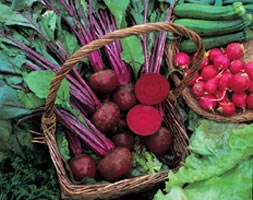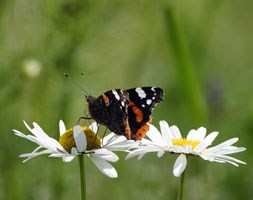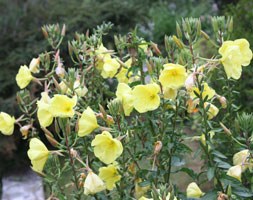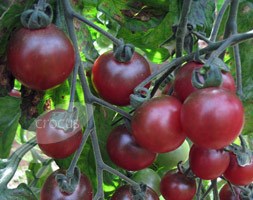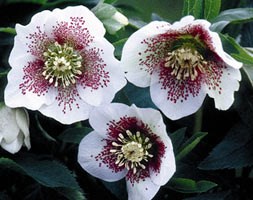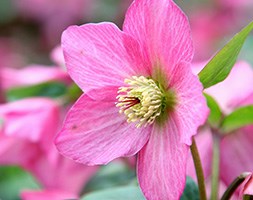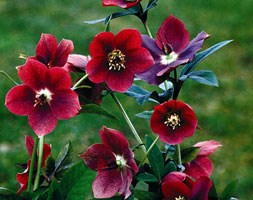Price reductions at Crocus
by Sarah - December 21st, 2013.Filed under: Crocus, Price Reductions.
Crocus has cut the price of hundreds of items
beetroot ‘Boltardy’ (beetroot Boltardy) was £0.99 now £0.64
Position: full sun or partial shade Soil:tolerates most A classic beetroot, super-reliable and very tolerant of weather extremes, so you can start your crop earlier in the year and finish harvesting later. Produces delicious deep purple, spherical roots which are at their tenderest harvested just larger than a golfball. The leaves can also be picked sparingly as a tasty spinach substitute. Growing Instructions: In spring, make a shallow drill 1cm deep and sow the large, easy-to-handle seeds about 15cm apart. Cover again lightly with soil and water in. Seeds produce multiple seedlings, so thin to leave one plant to mature at each spot. Beetroot can also be grown in containers: sow direct into the compost allowing about five seeds to a 45cm pot. Sow a half-row of seeds every three weeks for a regular supply of roots from early summer well into autumn. Sow: March-July Harvest: Late May to September Approximate quantity: 275 seeds
Centaurea cyanus (cornflower) was £2.49 now £1.24
Position: full sun Soil: well-drained soil Rate of growth: average Hardiness: hardy annual Piercing, bright blue flowers with ruffled petals and violet-blue centres appear from early to late summer among lance-shaped, mid-green leaves. Once a common sight in cornfields, this lovely annual is perfect for naturalising in a sunny wildflower meadow and is a magnet for butterflies and bees. The flower petals are edible and have a clove-like taste. Garden care: Wild flowers prefer poor soils, so do not apply fertiliser. Deadhead regularly to prolong flowering. In autumn, cut the faded flowerheads down to the ground and compost the dead stems. Sow: March-May or September – October Flowering: July – August-September or May -July Approximate quantity: 100 seeds.
Papaver rhoeas (field poppy) was £2.49 now £1.24
Position: full sun Soil: well-drained, preferably poor soil Rate of growth: average Hardiness: fully hardy Once a common sight in cornfields, this brilliant red field poppy is perfect for a sunny wildflower garden or meadow, where it will self-seed freely. Profits from these seeds are used to protect existing wildflower areas and develop new sites where wildflowers can grow. In folklore field poppies were believed to cause thunderstorms. Garden care: When sowing seeds do not use a fertiliser since wildflowers prefer poor soils. In autumn after flowering cut the faded flower-heads down to the ground and compost the dead stems. Sow: March-May or September-October Flowering: August-September or May-July Approximate quantity: 5000 seeds.
Leucanthemum vulgare (ox-eye daisy) was £2.49 now £1.24
Position: full sun Soil: moist, well-drained soil Rate of growth: fast-growing Flower colour: white Other features: toothed, dark green leaves, excellent informal cut-flowers Hardiness: fully hardy Large, white, daisy-like flowers with yellow centres on long stalks. This native wildflower is commonly found growing in bold swathes on grassy banks and roadside verges from June to August. Perfect for naturalising in a sunny wildflower meadow, where it will create a carpet of flowers. This packet contains enough seeds for 1sq m of meadow – more if they are started off in a seed tray and grown on a little before planting out. Garden care: Divide over-congested clumps in autumn or spring. Sow: March – October Flowering: May – July Approximate quantity: 1350 seeds.
Oenothera biennis (evening primrose) was £2.49 now £1.24
Position: full sun Soil: poor to moderately-fertile, well-drained soil Rate of growth: average Hardiness: fully hardy Evening primroses are prized for their ephemeral flowers that open at night and fade by dawn, and for their delicate fragrance that fills the air at dusk. The bowl-shaped, pale yellow flowers which appear on tall spikes from June to September seem to glow as the light fades and age to dark golden-yellow. They are happiest in a sunny, well-drained border or wildlife garden, and as the name suggests, are biennial. The flowers are an important source of nectar for bees and other insects and the seeds are used commerically for making evening primrose oil. Garden care: Protect the young foliage from slug damage using beer traps or environmentally-friendly slug pellets. Sow: March-October Flowering: July-August Approximate quantity: 500 seeds
tomato ‘Rosella’ (cherry tomato) was £2.19 now £1.59
Position: full sun Soil: humus-rich, moisture retentive soil The fruits of this recently introduced cherry tomato have a distinctive flavour, which has hints of raspberries, blackberries and other summer fruits. They are also noted for their attractive appearance as their skin is a deep plum-pink with just a hint of green near the stalk. Their firm textured flesh makes them suitable for eating straight from the vine or for cooking. Growing Instructions: Sow in a frost-free greenhouse or windowsill, potting on seedlings individually as they grow. Once all danger of frost has passed, harden plants off and plant into hanging baskets or large containers of good-quality compost: allow one plant to a 35cm container. Keep well-watered and feed weekly with liquid tomato feed once flowers form. Sow: January-March Harvest: August-September Approximate quantity: 25 seeds.
Helleborus x hybridus ‘White Spotted Lady’ (Lady Series) (lenten rose / hellebore) was £2.99 now £1.99
Position: partial shade Soil: heavy, neutral to alkaline soil Rate of growth: average Flowering period: February to April Flower colour: striking white flowers with dark red spots. Other features: all parts of the plant cause severe discomfort if ingested; the sap may cause skin irritation Hardiness: fully hardy Pendent or outward-facing, creamy white flowers that are heavily flecked with maroon spots, appear in loose cymes at the ends of the upright, leafy stems. Useful for offering seasonal diversity when used in conjunction with hostas and ferns. Garden care: Add lots of well-rotted leaf mould or organic matter to the planting hole. Apply a generous 5-7cm (2-3in) mulch of well-rotted organic matter around the base of the plant in autumn and provide a top-dressing of general fertiliser each spring.
Helleborus x hybridus ‘Pink Lady’ (lenten rose / hellebore) was £2.99 now £1.99
Position: partial shade Soil: heavy, neutral to alkaline soil Rate of growth: average Flowering period: February to April Other features: all parts of the plant cause severe discomfort if ingested; the sap may cause skin irritation Hardiness: fully hardy (borderline) Perfectly suited to the woodland floor, where it will offer seasonal diversity when used in conjunction with hostas and ferns, the pendent or outward-facing flowers of this hybrid Lenten rose are a very pretty shade of pink. Garden care: Add lots of well-rotted leaf mould or organic matter to the planting hole. Apply a generous 5-7cm (2-3in) mulch of well-rotted organic matter around the base of the plant in autumn and provide a top-dressing of general fertiliser each spring. Any remaining leaves from the previous years growth can be cut back to ground level in late winter to give the flowers maximum impact.
Helleborus x hybridus ‘Red Lady’ (Lady Series) (lenten rose / hellebore) was £2.99 now £1.99
Position: partial shade Soil: fertile, neutral to alkaline soil Rate of growth: average Flowering period: February to April Flower colour: shades of red Other features: all parts of the plant cause severe discomfort if ingested; the sap may cause skin irritation Hardiness: fully hardy In late winter, upright stems bearing up to five, single red flowers, appear above the evergreen foliage, creating interest in the garden at a time when most plants are completely dormant. The coarsely toothed, lustrous foliage will slowly spread to form open clumps, making it ideal groundcover in woodland gardens or naturalised planting schemes. They will tolerate some direct sun as long as the soil is reliably moist. Garden care: Add lots of well-rotted leaf mould or organic matter to the planting hole. Apply a generous 5-7cm (2-3in) mulch of well-rotted organic matter around the base of the plant in autumn and provide a top-dressing of general fertiliser each spring.







